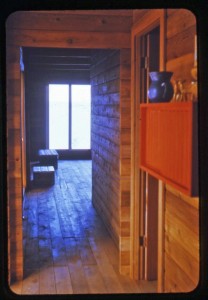Jay Teitel, a writer and editor at Cottage Life magazine in Toronto, recently emailed me a question: he was writing an article titled “The Cottage of the Future,” and he wondered if I had any thoughts about what summer cottages would look like in the year 2050. The custom of having a country retreat goes back to at least the ancient Romans—Pliny’s villa—but the summer cottage is not simply a house in the country, nor it it a beach house or a ski chalet. The quintessential cottage is a cabin in the forest, perhaps in the mountains, preferably by a lake. A primitive hut. This tradition, which probably dates from the nineteenth century, is most common in Scandinavia, Canada, and parts of the United States, places with wild forest, mountains, and lakes–and short summers. It is about getting back to nature, canoeing, fishing, chopping wood, cooking outdoors, kerosene lanterns, morning swims. In other words, “roughing it.” A summer cottage, at least in my imagination, has no electricity or running water, it smells of wood smoke and cedar planks, it has a porch. What will summer cottages look like in 2050? Forty-four years ago, I built a cottage for my parents in Vermont, overlooking Lake Champlain. The current owners have barely moved the furniture, and they still eat at the table and benches I cobbled together out of scrap wood. In another 44 years I expect it all to be still there, pretty much unchanged.


